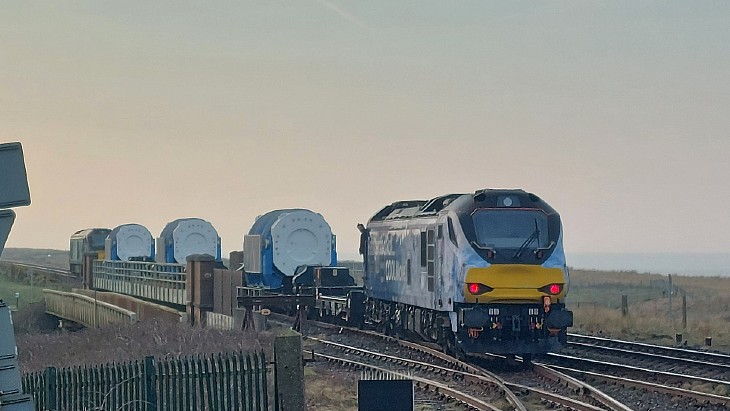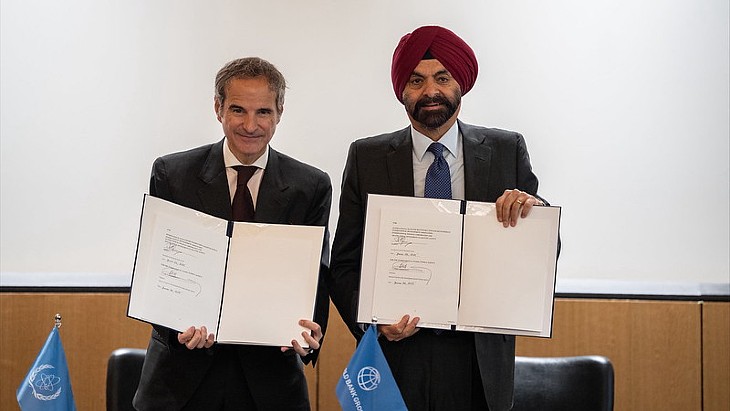Demolition starts of US vitrification plant
Following two years of planning, demolition of the West Valley Demonstration Project (WVDP) vitrification facility in New York State began last week. The work is scheduled to be completed in eight months.
.jpg) |
| Demolition underway at the WVDP vitrification facility (Image: DOE) |
WVDP is an environmental remediation project at the site of a former commercial nuclear fuel reprocessing centre located about 40 miles (64km) south of Buffalo, New York.
The vitrification facility was constructed and operated in the 1980s as a non-radioactive testing area for the vitrification melter. Following successful completion of melter testing, the facility was expanded and converted to a full-scale remotely operated vitrification facility. It operated between 1996 and 2002, processing over 2200 cubic metres of high-level waste (HLW) liquid and sludge to produce 275 stainless steel canisters of solidified HLW. WVDP repurposed the facility in 2007 for remote waste processing prior to deactivation.
CH2M Hill BWXT West Valley LLC (CHBWV), was selected by the US Department of Energy (DOE) to conduct Phase I decommissioning activities at the WVDP under an 8.6-year, $461.4 million contract that began in August 2011. Since taking over control of the site, the CHBWV team has been leading cleanup and facility demolition activities and is actively engaged in removing radioactive waste, contaminated equipment and obsolete structures from the 81-hectare site. The vitrification facility was declared demolition-ready on 16 March.
Demolition work began on 11 September, the DOE's Office of Environmental Management announced the following day.
The facility is 40 meters long by 31 meters wide and 15 meters tall. Its concrete structure is reinforced with structural steel and sided with sheet steel. Its walls and roof are between 0.6 and 1.2 meters thick. Demolition of the facility will generate an estimated 6500 tonnes of low-level waste, which will be shipped to an offsite federal disposal facility.
Workers will first demolish the radiologically "cleanest" areas of the facility, such as the perimeter aisles, before starting on the facility's other areas, such as the vitrification cell, which housed all of the major radioactive process equipment. This strategy, the DOE said, minimises the potential for cross-contamination of facility areas and reduces the cost of decontaminating equipment and materials transferred from one area to another.
Workers will control the potential spread of contamination through water spraying, encapsulation fixatives, regular housekeeping activities, adherence to established work practices, and full-time monitoring by radiological control technicians. WVDP will use 16 air monitoring stations located outside the site boundary and others placed around the demolition area to monitor for potential migration of contamination.
Scott Chase, the facility disposition project operations manager for cleanup contractor CHBWV, said: "We're well prepared for demolition. It's been two years in the planning, and we've looked at it from multiple directions."
WVDP project director Bryan Bower said, "As we move into the demolition phase of this project, we recognise the positive impact vitrification had on the area and look forward to completing our mission at West Valley."
The WVDP vitrification facility is one of only two such facilities to operate in the USA.
Researched and written
by World Nuclear News
_17992.jpg)
_75800.jpg)







..._58412.jpg)

